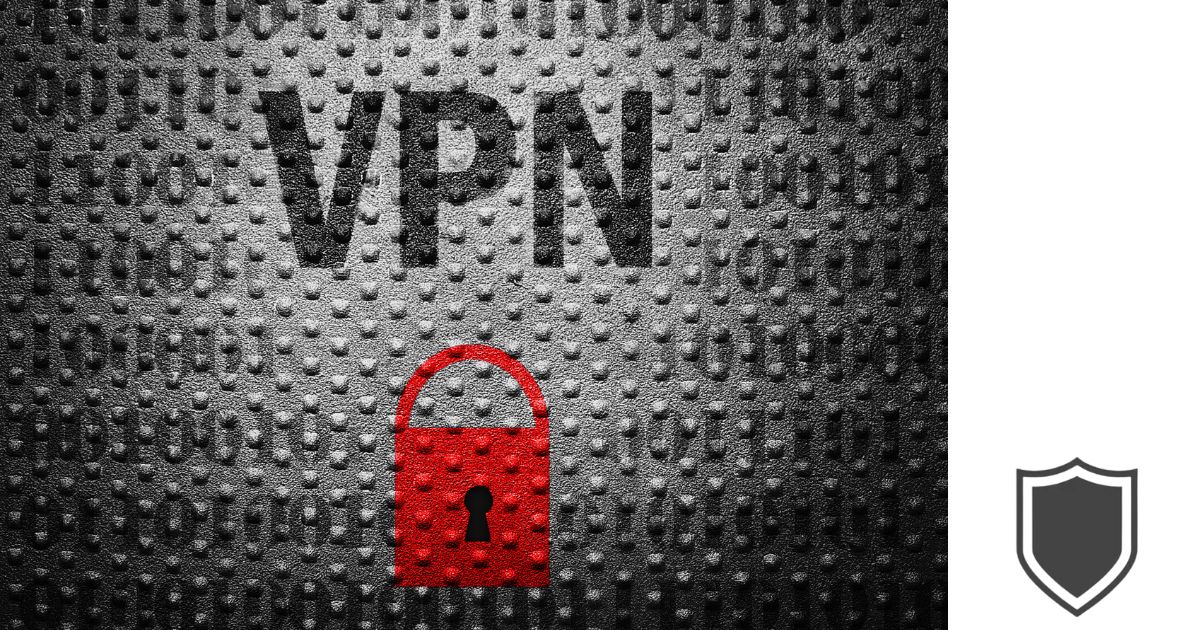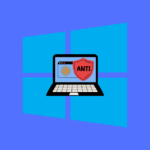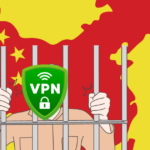Greetings, technology aficionados! It’s Dr. Edward Baldwin at your service, ready to navigate you through our journey. In this session, we’re diving into the realm of Virtual Private Networks (VPNs), focusing particularly on analyzing their security measures. Picture a VPN as a hidden passageway for your internet data, shielding it from unwelcome scrutiny in the online world. Yet, the pivotal question remains, how do we authenticate the security guarantees of this covert passage?
In “How to Test VPN Security Like a Pro,” we’re not just scratching the surface; we’re diving deep. You might be using a VPN for privacy, bypassing geo-restrictions, or secure browsing, but is it really keeping your data safe? From encryption strength to potential leaks, we’ll explore how to put your VPN through a series of tests to ensure it’s the digital fortress you need it to be.
So, whether you’re a remote worker, a privacy seeker, or just a curious cat in the world of internet security, buckle up. It’s time to equip you with the tools and know-how to test your VPN’s security like a seasoned tech pro. Let’s get started!
Table of Contents
Understanding VPN Security Basics

When I explore VPN security, I focus on how a VPN (Virtual Private Network) preserves my online privacy. A VPN forms an encrypted connection between my device and the internet. This prevents outsiders from viewing my internet activity.
Encryption is at the heart of a VPN’s security. When I send data over the internet using a VPN, it’s scrambled into an unreadable format. Only the intended recipient, who has the right key, can unscramble this data.
IP leak protection is another fundamental aspect. If my IP address leaks, it can reveal my location and identity, defeating the purpose of using a VPN. To check for leaks, I perform a simple IP test before and after disconnecting from the internet with the VPN active.
- IP Address Leak Test
- Connect to VPN
- Disconnect internet while VPN is running
- Reconnect and run IP test
My VPN should also have a no-logs policy. This means it doesn’t record any information about my internet activity that could be traced back to me.
Lastly, using secure VPN protocols is crucial. Protocols like OpenVPN or WireGuard ensure strong encryption standards and secure my data effectively.
Here’s a quick checklist I use to evaluate VPN security basics:
- Strong encryption methods
- IP leak protection
- No-logs policy
- Secure VPN protocols
By understanding these basics, I can better evaluate my VPN’s security and ensure that my private information stays just that—private.
Setting Up Your VPN Test Environment

Before I dive into the details, it’s essential that I establish a secure and isolated environment. This helps ensure accurate test results for VPN security without affecting my main network.
Creating a Test Network
To create a test network, I begin by setting up a virtual local area network (VLAN). This is like having a separate, isolated section within my larger network that I can control and monitor without risking the integrity of my primary setup.
- Step 1: On my router, I navigate to the VLAN settings.
- Step 2: I create a new VLAN ID.
- Step 3: After assigning a unique network address range, I make sure to activate it.
Configuring Test VPN Server and Clients
To properly evaluate my VPN’s security, I’ll need to configure both the server and the clients:
- VPN Server:
- I install VPN server software on a dedicated machine within my test network.
- I choose strong encryption standards (AES 256-bit, for example) and secure protocols (OpenVPN or WireGuard).
- Then, I configure authentication methods—preferably two-factor authentication (2FA) to maximize security.
- VPN Clients:
- I install VPN client software on various devices such as a smartphone, a tablet, and a laptop.
- I ensure all devices are connected to the test VPN server.
- I use the same encryption and protocols as the server for consistency.
Conducting Basic Connectivity Tests

When setting up a VPN, it’s crucial I ensure it’s properly connected and that my data is flowing securely through the encrypted tunnel it provides.
Testing for Successful Connection
To verify that I’ve successfully connected to my VPN, I start by checking my device’s network settings. I should see the VPN profile as ‘connected’. If the status is anything other than this, I’ll need to troubleshoot the connection. Additionally, I often use an external website such as “ipleak.net” to confirm that my public IP address has changed to the address provided by the VPN service. This step confirms that my internet traffic is routed through the VPN server.
Checking Data Transfer Across VPN
Once connected, it’s important I test the data transfer capability to ensure all my online activities are routed through the VPN. For this, I perform the following steps:
- Send a ping to a known website or service and observe if the packets are sent and received without loss.
- Initiate a download and upload speed test using a speed testing website like “speedtest.net” to measure the data transfer rates. I’m looking for consistent speeds that indicate a stable connection without significant drops, which could signal issues with data transmission.
By conducting these basic tests, I can confidently determine if my VPN is properly setup and functioning correctly.
Assessing VPN Encryption Strength

When I test a VPN’s security, I focus primarily on encryption protocols and key exchange mechanisms. These are crucial for ensuring that my data remains secure and private.
Evaluating Encryption Protocols
Encryption protocols determine how my data is secured over a VPN connection. Here’s what I specifically look for:
- OpenVPN: I check for the usage of OpenVPN with UDP and TCP, as it’s widely regarded for its balance between security and speed.
- L2TP/IPSec: Another protocol I expect to see is Layer 2 Tunneling Protocol combined with IP Security. It’s generally considered secure but can be slower than OpenVPN.
- WireGuard: This is a newer protocol that promises faster speeds and modern cryptographic techniques. I’m keen on making sure it’s implemented correctly.
- SSTP and IKEv2: For Windows and mobile devices, respectively, Secure Socket Tunneling Protocol and Internet Key Exchange version 2 are also protocols I evaluate for their strong security features.
These protocols generally ensure that my data is encrypted in such a way that eavesdropping or interception is thwarted.
Analyzing Key Exchange Mechanisms
The key exchange is critical for establishing a secure connection without my private key being intercepted. Here’s what I review:
- Diffie-Hellman: I check for protocols using Diffie-Hellman key exchange due to its “forward secrecy”, which means even if a single session’s key is compromised, past or future sessions are not affected.
- RSA: Another common method is RSA; however, I verify that it’s using keys of sufficient length, typically 2048 bits or higher.
- ECC (Elliptic Curve Cryptography): ECC can provide the same level of security as RSA but with smaller key sizes, which can mean better performance. I ensure the implementation of ECC is up-to-date and secure.
The integrity of the key exchange directly impacts the security of the VPN session, so I take particular care to assess these mechanisms.
Checking for IP, DNS, and WebRTC Leaks

When I use a VPN, I make sure it’s safeguarding my online privacy effectively. To confirm this, I regularly check for IP, DNS, and WebRTC leaks, which could expose my personal details.
Verifying IP Address Concealment
My first step is to ensure my VPN hides my IP address properly. I check my IP address without the VPN activated, and then once again when the VPN is running. If my IP address changes to the VPN server’s IP, that’s a good sign. I use websites like ipleak.net for this, as they can detect both IPv4 and IPv6 address leaks.
Preventing DNS Leak Vulnerabilities
Next, I look into DNS leak protection. I use a specific DNS leak test website and compare the server locations and IP addresses displayed with those from my VPN provider. If I see my ISP’s DNS servers on the list, that means there’s a DNS leak. Here’s a simple checklist I follow:
- Check without VPN: Note the DNS addresses without VPN.
- Check with VPN: Look for different DNS addresses after connecting to VPN.
- Match with VPN provider: Ensure the new DNS addresses belong to my VPN provider.
Blocking WebRTC Leak Points
Finally, I address potential WebRTC leaks. This protocol can inadvertently reveal my true IP address even when I’m connected to a VPN. To test for WebRTC leaks, I access a WebRTC test site and look at the results. If any IP address displayed is mine and not the VPN’s, I need to disable WebRTC in my browser or use a browser extension to block these leaks.
Performing Vulnerability Scanning and Penetration Testing

To ensure the security of a VPN, I focus on two crucial practices: vulnerability scanning and penetration testing. These methods help me uncover and address security weaknesses before they can be exploited.
Utilizing Automated Scanner Tools
When beginning vulnerability scanning, I use automated scanner tools because they’re efficient at quickly identifying known vulnerabilities. Tools like Nessus or OpenVAS are my go-to choices. Here’s how I typically proceed:
- Scan Configuration: I configure the scanner with the target VPN’s details.
- Running the Scan: I perform the scan during low-traffic periods to minimize impact.
- Reviewing Results: I carefully analyze the output, looking for known vulnerabilities that the tool has flagged.
Remember, this process helps me locate a wide range of potential security issues, from outdated software to misconfigurations.
Carrying Out Manual Pen Testing
After automated scanning, I move into manual penetration testing. This step involves a more nuanced and complex approach, as I attempt to exploit identified vulnerabilities, mimicking an attacker’s actions. Here’s the break down:
- Exploitation: Employing methods such as SQL injection, cross-site scripting, or session hijacking to test the VPN’s defenses.
- Post-Exploitation: Once I gain access, I explore how deep I can penetrate the network, determining the potential damage.
By manually testing the VPN, I gain a deeper understanding of its security posture and can recommend specific remedial measures.
Evaluating Authentication and Authorization Procedures

When I assess a VPN’s security, a critical aspect to consider is how it manages authentication and authorization. These processes determine who can access the VPN and what they have access to.
Authentication:
- Credentials: I check if the VPN requires strong passwords or multi-factor authentication.
- Certificate-based: I verify if it uses digital certificates as a form of identifying and authenticating devices.
Authorization:
- Access Control Lists (ACLs): I look for ACLs that specify which resources a user can access after being authenticated.
- Role-based Access Control (RBAC): I consider whether the VPN implements RBAC, which grants access based on the user’s role within an organization.
I also pay attention to:
- Session Policies: These should dictate what can be done during a VPN session, including time-outs for sessions to prevent unauthorized access.
- User Activity Logs: It’s essential for a VPN to log user activities for auditing purposes, ensuring no unauthorized actions have gone unnoticed.
By meticulously checking these points, I can gauge the robustness of a VPN’s authentication and authorization procedures, ensuring that only authorized individuals can access and navigate the VPN securely.
Analyzing VPN Server Security Configuration

When I’m assessing the security configuration of VPN servers, I always start with the basics — encryption standards. Strong encryption, like AES (Advanced Encryption Standard) 256-bit, ensures that my data remains unreadable to prying eyes. It’s considered virtually unbreakable with current technology.
Next on my checklist is the protocol the VPN uses. Protocols like OpenVPN and WireGuard offer a good balance of speed and security. I tend to avoid PPTP due to its known vulnerabilities.
- OpenVPN: Offers robust security; highly customizable.
- WireGuard: Known for fast performance and state-of-the-art cryptography.
- IKEv2/IPsec: Secure and excellent for mobile devices that switch networks often.
- L2TP/IPsec: More secure than PPTP but slower than other protocols.
- PPTP: Fast but outdated and not secure.
I also examine the server’s authentication methods. Multi-factor authentication (MFA) adds an extra layer of security.
Then, server location plays a role. I consider where the server is and the country’s privacy laws. Jurisdictions aligned with privacy-friendly policies are preferable.
Finally, I test for IP and DNS leaks to ensure my internet requests aren’t being routed through my ISP’s servers inadvertently. Tools such as dnsleaktest.com are useful. If my actual IP or a DNS request is visible, it indicates a security flaw.
By taking a structured approach to review these key aspects, I can confidently evaluate the security configuration of a VPN server.
Assessing the Impact of Network Load on VPN Performance

When I’m evaluating how network load affects VPN performance, I always start by considering the available bandwidth. Bandwidth is the amount of data that can be transmitted in a given time frame, and VPNs typically share this bandwidth among many users. When the network is heavily loaded, I can expect a decrease in speed simply because there’s less bandwidth per user.
To measure this, I conduct speed tests at different times of the day:
- Off-Peak Hours: I run tests when network traffic is low to get a baseline performance.
- Peak Hours: I then run the tests during high-traffic periods to compare.
Here’s a simple way I chart the results:
| Time of Day | Download Speed | Upload Speed | Latency |
|---|---|---|---|
| Off-Peak | 50 Mbps | 10 Mbps | 50 ms |
| Peak | 30 Mbps | 5 Mbps | 100 ms |
Table: Example of VPN performance at different times of day
The contrast between off-peak and peak times gives me a clear picture of how network load influences my VPN speed and latency. It’s crucial to remember that results can vary widely based on the service provider and specific network conditions.
Moreover, I take a close look at how encryption level affects performance under different loads. Higher encryption levels generally translate to slower speeds, but during times of high network load, this impact is more pronounced. I often switch between different encryption protocols to find a good balance of security and performance:
- Lighter Encryption (e.g., PPTP): Faster speeds but less secure.
- Heavier Encryption (e.g., OpenVPN, IKEv2): More secure but potentially slower.
I do these assessments regularly since network conditions are always changing. It helps me understand the most optimal times for high-bandwidth activities without compromising on security.
Documenting Test Results and Creating Reports

When I conduct a VPN security test, I always make sure to keep a detailed record of the process and outcomes. It’s essential for understanding the strengths and weaknesses of the VPN service. Here’s how I like to document my findings and craft a report:
1. Establish a Baseline: I start by noting down the expected results — what the VPN should ideally do in every test scenario. This is my benchmark against which I’ll compare the actual outcomes.
2. Record Test Details:
- Date & Time: When the test was carried out.
- Test Conditions: Any specific conditions under which the test was conducted.
- Methodology: The steps I followed during the testing process.
3. Use Tables and Lists: For clarity, I organize the results in a table format:
- Test Type (e.g., IP Leak, DNS Leak)
- Expected Result
- Actual Result
- Comments (noting any deviations or concerns)
Here’s a simplified example:
| Test Type | Expected Result | Actual Result | Comments |
|---|---|---|---|
| IP Leak | No leak | No leak | As expected. |
| DNS Leak | No leak | Leak detected | Needs review. |
4. Analyze Findings: I review the gathered data carefully. If there’s a discrepancy between the expected and actual results, I’ll make a note of it, investigating further if necessary.
5. Summarize Observations: Finally, I’ll summarize key points in straightforward bullet points. For instance:
- IP leak test passed successfully.
- Minor DNS leak detected; requires additional scrutiny.
Remember, the goal is to provide a clear and truthful report that other parties can easily understand and trust.
The Last Word
And that’s a wrap on our deep dive into VPN security testing. From encryption checks to leak tests, we’ve covered the essential steps to ensure that your VPN isn’t just a façade of security, but a genuine stronghold. Remember, in this era of digital vulnerability, taking an active role in verifying your online protection is more than just a good practice—it’s a necessity.
As we conclude “How to Test VPN Security Like a Pro,” keep in mind that staying informed and vigilant is key in the ever-evolving landscape of internet security. Don’t just rely on what a VPN service claims; put it to the test. Ensure your private information stays just that—private. Keep testing, keep learning, and most importantly, keep your digital life secure. Here’s to safe and private browsing, everyone!
How to Test VPN Security FAQs

When it comes to protecting my online privacy, I realize that utilizing a reliable VPN is key. Below, I’ve compiled a list of FAQs that I often consider to ensure my VPN is secure and effective.
What steps can I follow to verify my VPN is actively encrypting my connection?
To verify that my connection is encrypted, I typically look at the VPN’s status to ensure it’s connected. Then, I check my IP address to see if it’s different from my actual one. This change implies that the VPN is actively routing my traffic.
What methods can be used to determine the strength of a VPN’s encryption?
I examine the VPN’s specifications, looking for encryption types like AES-256, which is currently the gold standard. Reading independent audits or reviews can also give me insights into the robustness of a VPN’s encryption.
How can I test the speed of my VPN connection to ensure it’s performing well?
I use online speed test tools to measure my internet speed with and without the VPN active. Any significant decrease in speed might indicate an issue with the VPN’s performance.
What are some common vulnerabilities in VPNs that I should be aware of?
Common vulnerabilities include outdated encryption protocols, exposed IP addresses, and DNS leaks. I stay informed about these by following reputable cybersecurity resources and ensuring my VPN software is up to date.
How can I check for DNS leaks when connected to my VPN?
I typically use DNS leak test websites, which can show if my DNS requests are revealing my actual ISP rather than going through the VPN. This indicates whether my online activity might be exposed.
How do I know if my VPN is leaking IP addresses and how to prevent it?
Checking for IP leaks involves visiting an IP leak test website while connected to my VPN. If the IP displayed is not the one assigned by my VPN, I have a leak. To prevent this, I make sure to use VPNs with built-in leak protection features.
- Amazon Email Phishing: How to Identify and Avoid Scams - May 11, 2025
- Malwarebytes vs McAfee: Decoding the Ultimate Antivirus Battle - May 11, 2025
- Best Antivirus for Windows 10: Expert Recommendations for 2023 - May 11, 2025









